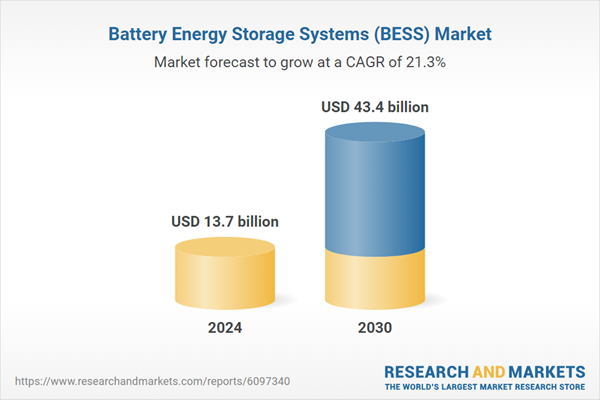It depends on various factors such as the average solar power generation in your area, your house's average energy consumption, battery specifications, and time period.
Solar panels represent the future of power generation as they utilize renewable solar energy. Contrary to the belief that solar panels are only for hotels and industries, many individuals and large residential areas are now adopting them. Not only is solar energy production a clean method, but it also enables significant cost savings on annual utility bills. If you're wondering how many solar panels and batteries are required to power a house, read on to learn how to calculate the necessary number of solar panels for your home.
Currently, solar panels are commonly utilized because of their high efficiency and the resulting reduction in electricity costs. However, the diverse range of house types, varying in size, as well as the type and quantity of solar panels and batteries needed, are influenced by these differences. These factors play a significant role in establishing the appropriate number of solar panels required for your specific home.
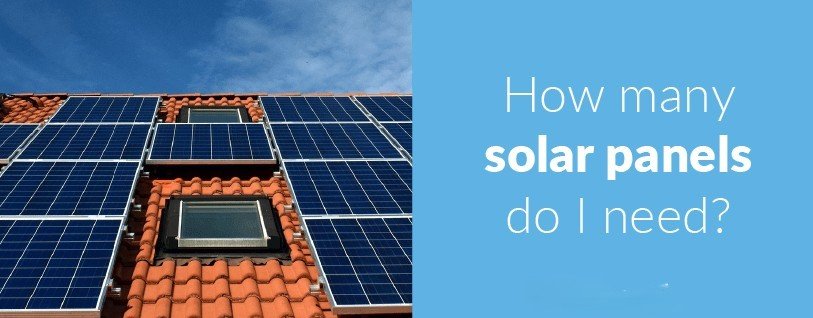
The typical solar power generation per month can fluctuate based on your geographical location. Some areas may receive 5-6 hours of sunlight, while others may get 8-9 hours, or even more. As a result, the average monthly solar power generation in different regions can range between 80 to 130 kilowatt-hours. It's important to note that this range varies due to differences in sunlight intensity during the summer and monsoon seasons.
Another crucial factor in determining the number of solar panels and batteries needed to power a house is the average monthly power consumption. This can be calculated by adding up the power consumption from the past 12 months and then dividing the total by 12. It's essential to consider the power consumption in units, rather than in monetary value.
When it comes to the number of batteries required, several factors come into play. A typical American household can be sustained for about 3 days with a battery bank that provides approximately 90 kilowatt-hours of electricity. To generate 5.2 kilowatts of electricity, you would need a battery bank containing 18 batteries. However, the actual number of batteries may vary depending on the amount of power produced and consumed. Additionally, the specification of the batteries, particularly in terms of voltage and ampere-hours, also plays a role in determining the right number of solar panels and batteries needed to power a house in any given area. The time period for which the batteries are required also affects this calculation, as it defines how many days the solar panels need to function with a battery backup when there is a shortage of sunlight.
Typically, solar panels have an average lifespan of 25 years or more and are built to endure extreme weather conditions. They come with a minimum warranty of 25 years. According to a study by the National Renewable Energy Laboratory, solar panels tend to last 80% longer than their warranty, providing benefits for 33 years despite being paid for 25 years.
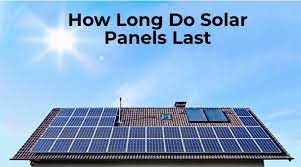
There are numerous reasons to consider installing solar panels. This includes the impact of rising electricity rates, long-term savings from a single investment, increased resale value of a house with solar panels, the availability of substantial tax credits and rebate programs in some states, and the assurance of a quarter-century warranty.
Solar panels function by converting light energy into chemical energy, which is then transformed into electrical energy through several steps. These include absorbing sunlight, converting the light into direct current (DC) power, further converting the DC into Alternating Current (AC) by employing an inverter, transferring the electricity from the wires into the house, and powering all connected devices with the current. Any surplus electricity generated is stored in the electric grid.
There are three basic types of solar panel systems:
Grid-Tied System: This system is commonly used in residential houses and is connected directly to both the house and the utility grid. It allows for a seamless transition between solar power and general power, and is considered the most cost-effective option.
Grid-Tied System with Battery Backup: Similar to the grid-tied system, this one incorporates a battery backup, storing excess electricity for later use. The number of solar panels and batteries needed to power a house depends on the type of batteries used.
Off-Grid System: This system is not tied to the utility grid and is only connected to the house and the battery bank. It relies on a battery backup, making it the most expensive option.
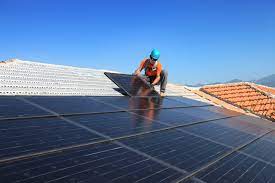
The quantity of solar panels necessary for a home is influenced by various factors. These factors include:
1.Solar Panel Inclination: The angle at which the solar panels are installed impacts their power generation, as the sun's position changes throughout the year. Therefore, selecting the most suitable angle that maximizes sunlight absorption in all seasons is crucial.
2.Dust and Snow: Solar panels are not only exposed to sunlight but also to dust and snow. Accumulation of a thick layer of snow or dust can obstruct the sunlight reaching the panels, affecting their efficiency.
2.1Orientation: To receive the maximum amount of sunlight, solar panels should ideally be oriented towards the equator. For instance, in countries located in the Northern Hemisphere, solar panels should face south, and in the Southern Hemisphere, they should face north.
Shadows: Objects such as trees, poles, or other buildings can cast shadows on solar panels if they are taller than the house. This can block sunlight and reduce power generation. It is important to place the solar panels in areas where they receive at least 4-5 hours of sunlight to maximize their efficiency.
The above factors also play a role in determining the number of solar panels and batteries required to power a home.
To calculate the quantity of solar panels or batteries necessary for your home, follow these steps:
Step 1: Determine your average daily electricity consumption.
Step 2: Determine the number of peak sun hours your specific location receives.
Step 3: Select a solar panel power rating, typically ranging from 250W to 450W.
Step 4: Calculate the total number of solar panels needed for your home by multiplying the values obtained in the previous steps.
Total number of solar panels required = daily electricity usage × peak sun hours × panel wattage
For example, if your daily electricity usage is 40,000 watt-hours, the average peak sun hours is 5 hours, and the average panel wattage is 400 watts, the calculation would be: 40,000 watt-hours ÷ 5 hours ÷ 400 watts = 20 solar panels needed to power your house.
Therefore, you would need 20 solar panels to meet your home's power needs.
Here are the steps to follow: first, find out your average daily electricity usage. Then, learn how many peak sun hours your specific location gets. Next, pick a solar panel power rating, which varies from 250W to 450W. Finally, calculate the total number of solar panels needed by multiplying your daily electricity usage, peak sun hours, and panel wattage. For example, if your daily electricity usage is 40kwh, the average peak sun hours is 5 hours, and the average panel wattage is 400 watt, you would need 20 solar panels to power your house.
The number of solar panels you need for your home= 40,000 watt-hours/5 hours/400 watt= 20 solar panels.
So, you’ll need 20 solar panels to power your house.
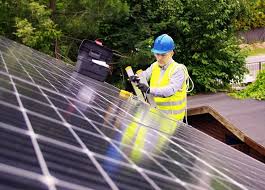
By taking into account the wattage of your appliances, the duration they will run, and the average amount of sunlight in your location, you can calculate the suitable solar panel size needed. For example, if you have 4 bulbs at 15 watts each and 1 fan at 60 watts running for 4 hours in 6 hours of sunlight, you would need a solar panel that can provide 80 watts per hour for these appliances. Also, other components like battery backup, inverter, and charge controller sizes are factors that must be considered.
As for a 1500 square foot house, the average electricity bill is about $100 per month. Based on this, an estimated 15-18 solar panels are typically needed to power this size of house, although the specific number can vary depending on location, sunlight availability, and the house's power consumption.
The cost to install solar panels can range from $15,000 to $30,000, but financing and incentives can help lessen the financial burden. Determining the right number of solar panels is based on the energy consumption, solar power generation, and solar panel capacity. By calculating these factors, you can decide how many solar panels are needed for your home and explore getting solar panels for your house during this holiday season.
PYTES'E-Box-48100R is an advanced solar battery energy storage system that can be used in off-grid, backup, zero output, time-sharing, demand response, peak shaving, virtual power plant and other scenarios to provide you with safer and more efficient of energy storage.
Compatible with all leading inverters, the E-Box-48100R is a smart choice for battery replacement, expansion or new installations. Solar battery storage enables homeowners to store energy generated from renewable sources, reducing reliance on the grid. If you need to replace your solar batteries or a larger number of solar batteries, consider PYTES solar batteries.
Please check our website or contact us for details.
Website:www.pytesusa.com
Email:pytesusa@pytesgroup.com

